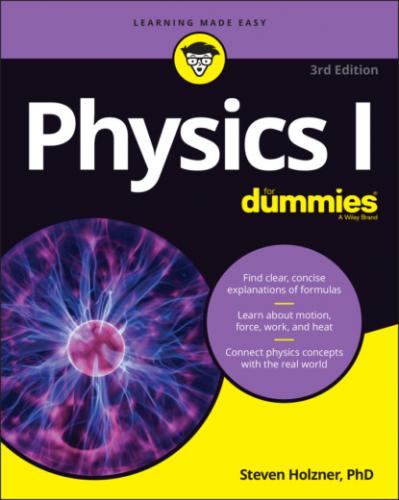The change in the y location is
If you’re more interested in figuring out the magnitude (size) of the displacement than in the changes in the x and y locations of the golf ball, that’s a different story. The question now becomes: How far is the golf ball from its starting point at the center of the graph?
So in this case, the magnitude of the ball’s displacement is exactly 5 meters.
Determining direction
Therefore, the angle itself is just the inverse tangent of that:
The ball (refer to Figure 3-2) has moved at an angle of 37° from the x-axis.
Speed Specifics: What Is Speed, Anyway?
There’s more to the story of motion than just the actual movement. When displacement takes place, it happens in a certain amount of time. You may already know that speed is distance traveled per a certain amount of time:
For example, if you travel distance s in a time t, your speed, v, is
Speed can take many forms, which you find out about in the following sections.
Reading the speedometer: Instantaneous speed
You already have an idea of what speed is; it’s what you measure on your car’s speedometer, right? When you’re tooling along, all you have to do to see your speed is look down at the speedometer. There you have it: 75 miles per hour. Hmm, better slow it down a little — 65 miles per hour now. You’re looking at your speed at this particular moment. In other words, you see your instantaneous speed.
Staying steady: Uniform speed
What if you keep driving 65 miles per hour forever? You achieve uniform speed in physics (also called constant speed). Uniform motion is the simplest speed variation to describe, because it never changes.
Uniform speed may be possible in the western portion of the United States, where the roads stay in straight lines for a long time and you don’t have to change your speed. But uniform speed is also possible when you drive around a circle, too. Imagine driving around a racetrack; your velocity would change (because of the constantly changing direction), but your speed could remain constant as long as you keep your gas pedal pressed down the same amount. We discuss uniform circular motion in Chapter 7, but in this chapter, we stick to motion in straight lines.
Shifting speeds: Nonuniform motion
Nonuniform motion varies over time; it’s the kind of speed you encounter more often in the real world. When you’re driving, for example, you change speed often, and your changes in speed come to life in an equation like this, where vf is your final speed and vi is your initial speed:
The last part of this chapter is all about acceleration, which occurs in nonuniform motion. There, you see how changing speed is related to acceleration — and how you can accelerate even
